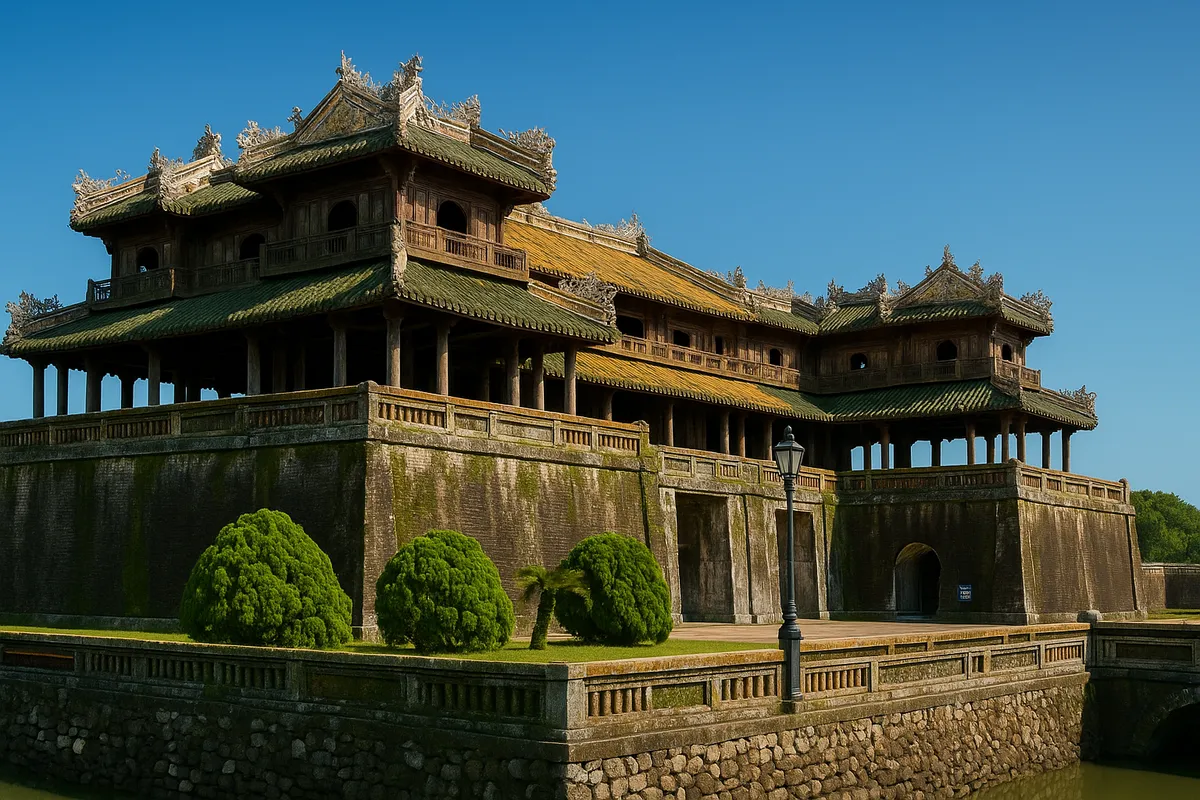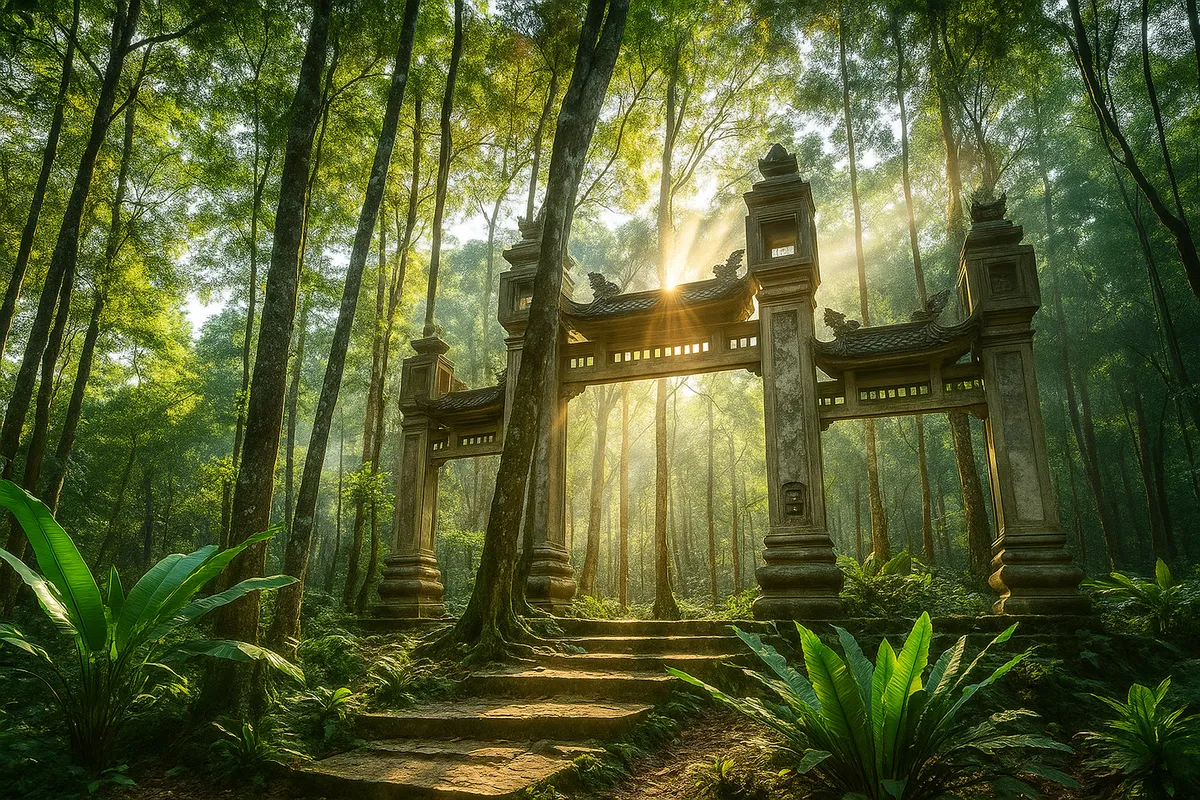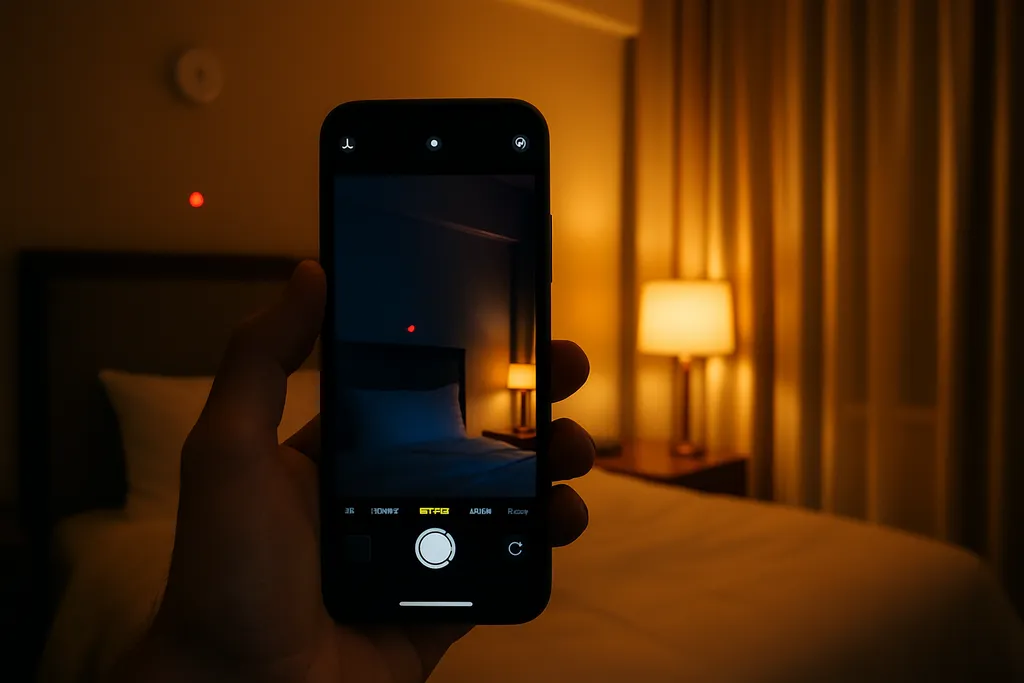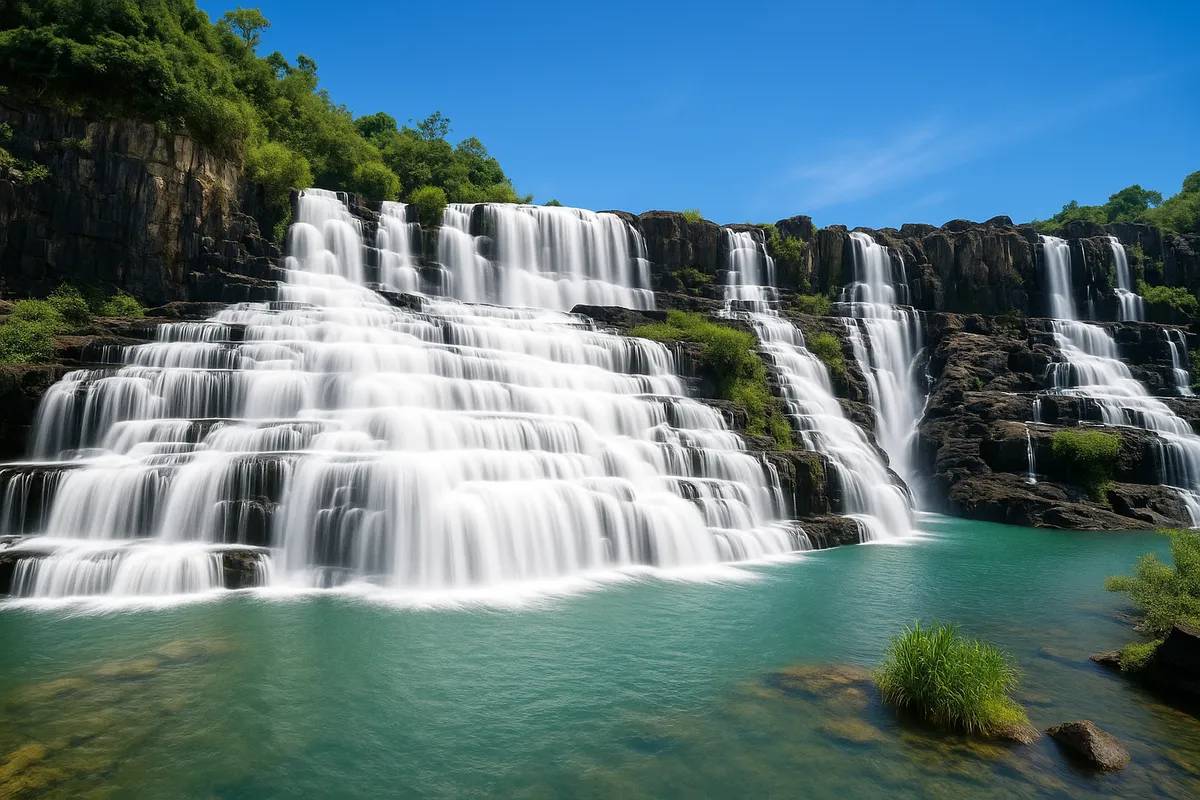Hue Imperial City - A slow-paced Asian living space
- Friday, May 16, 2025, 21:42 (GMT+7)
Hue Imperial City - A slow-paced Asian living space
The Imperial City of Hue is the key that unlocks the door to a royal world that once ruled in silence for more than a century. Every stone, roof tile, garden, and moss-covered wall carries the weight of a proud and ancient history. More than just the power center of the Nguyen Dynasty, Vietnam’s last feudal reign, the Imperial City remains a quiet dream that drifts through modern times, as if waiting for someone to touch and awaken it.
Nestled beside the gentle Perfume River and embraced by the larger Citadel of Hue, the Imperial City is one of the rare places where history can be felt without imagination. The old bricks still bear the footsteps of emperors, the lotus ponds whisper with the breeze like echoes from the days of royal maidens. Every structure in the complex is part of a solemn symphony of time, from the grand Noon Gate to the splendid Thai Hoa Palace, from the closed Forbidden Purple City to the dragon and phoenix-carved corridors resting quietly in the shadows of twilight.
What makes the Imperial City truly special is not only its deep historical roots or majestic architecture, but its ability to make any traveler pause, no matter the era. Here, time does not rush or clamor, but lingers like a still lake. The sunlight crossing the yellow-glazed roofs, the soft curve of Trung Dao Bridge over the Thai Dich Lake, or even the sound of tamarind leaves falling on stone courtyards can quiet the heart. This is a world not meant to be hurried through.
Constructed in 1804 under Emperor Gia Long, the Imperial City expanded and evolved through many generations of Nguyen rulers. The entire compound is encased in three layers of fortified walls: the Citadel, the Imperial City, and the Forbidden Purple City. Each layer represents a symbolic realm of power, ritual, and the absolute separation between royalty and common life. The architecture blends grandeur with softness, embodying the refined aesthetics of Eastern philosophy, with yellow glazed roofs, intricate dragon and phoenix carvings in ironwood, and a balanced layout of lakes and gardens following feng shui principles.
Its uniqueness does not lie in the opulence found in European palaces, but in its deep, quiet Eastern soul. A beauty both dignified and understated. Legends add a touch of magic to this place. Locals still speak of the spiritual energy of the ancient capital, a land where natural forces converge and where heaven, earth, and human spirit harmonize, leading the Nguyen Dynasty to choose it as the seat of power for over a hundred years. Some even say that on bright moonlit nights, one can faintly hear royal music drifting from the Forbidden Purple City, as if old memories have never faded.
On gentle sunny days, walking down the faded red wooden corridors, one can almost see the silhouettes of princes and princesses gliding by, carrying an air of quiet elegance and nostalgia. In those moments, Hue is no longer just a place, but a living memory, breathing and waiting to be heard. The saying “You haven’t truly seen Hue until you’ve entered the Imperial City” is no exaggeration. Every brick here carries the echoes of a time that once ruled a nation.
The Imperial City is not just a monument of history, but a feast for the eyes, ears, and senses. Each season brings its own charm. In spring, peach blossoms bloom around Thai Hoa Palace like a watercolor painting. In summer, cicadas hum under sunlight glancing off curved roofs. In autumn, golden leaves fall gently on lake surfaces, forming mirrors of memory. In winter, mist wraps the mossy walls like a silver-gray cloak over a long slumber.
For those who love beauty and slow-living moments, the best times to visit the Imperial City are early in the morning or late in the afternoon, when the light is soft and shadows stretch along stone steps. Autumn in Hue, from September to November, is often cool and dry, perfect for a quiet walk through this imperial space. Don’t forget to wear soft shoes and a wide-brimmed hat to move comfortably and add a classic touch to your photos in this cinematic setting.
From the center of Hue, a short walk or cyclo ride brings you to the Noon Gate, the main entrance to the Imperial City. Tickets are divided into different sections, but for a full experience, it’s best to choose the full package including the Imperial City, the tombs of Tu Duc and Minh Mang, for a deeper understanding of the Nguyen Dynasty’s royal legacy.
The culinary heritage of Hue tied to imperial memories should not be missed. First-time visitors are encouraged to enjoy lunch at eateries near the Imperial City: a bowl of authentic bun bo or a plate of freshly steamed banh beo can ease the weariness after a long walk. But do not rush to leave. Stay until sunset, when golden light spills across ancient bricks, and you might feel the Imperial City whispering a royal melody just for you.
No one can hold onto time forever, but the Imperial City of Hue is where one feels time has paused. It is not just a place to look at, but one to live in, to listen to, and to remember.
Some places do not need dazzling lights to shine. Some beauties can only be understood once you step inside and feel why it is called the soul of the land. The Imperial City of Hue is such a place. A place where every breath carries the essence of the past, and every step leads to an unnamed memory.

 CHECKIN.VN
CHECKIN.VN








Share on